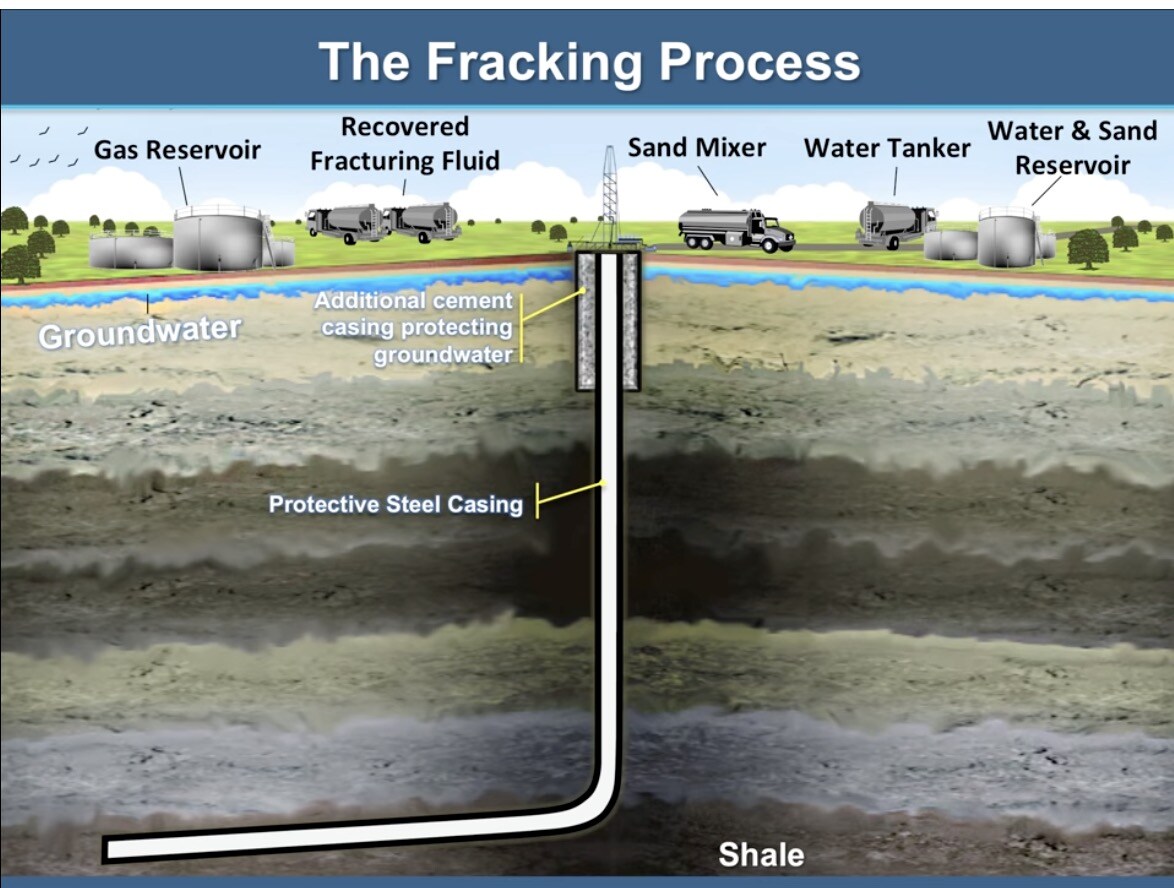by Ken Lopez
The courtroom is a forum where issue advocacy is enhanced by persuasive litigation graphics. However, other settings exist where attorneys, consultants, politicians, lobbyists and advocacy organizations must persuade skeptical audiences.
This article focuses on the creation of advocacy graphics for a particular issue: hydraulic fracturing, better known as fracking. Advocacy or lobbying graphics are especially valuable as the material may be used to educate a potential jury pool, to persuade and inform government officials and to support settlement negotiations. These advocacy presentations may be distributed via PowerPoint, YouTube or even delivered in person from an iPad®.
With information flowing faster than ever before and with timelines for decisions involving billions or even trillions of dollars shrinking (e.g. the recent Congressional budget-debt debate), we believe the need for quickly produced lobbying presentations is expanding quickly.
Indeed, just days ago, Animators at Law, publisher of The Litigation Consulting Report, announced its name change to A2L Consulting. This better aligns our corporate identity with additional services offerings like advocacy, grass roots and lobbying visual presentations, in addition to the services we have provided for 16 years like jury consulting, litigation graphics and trial technology. By way of example, we tackle the hot-button issue of fracking to show how issue advocacy presentations may be used when many scientific issues remain to be answered and no clear national consensus yet exists.
Fracking is the modern evolution of a 60-year old production stimulation technique that involves injecting fluid at very high pressure into a well. This technique is widely used to extract natural gas from shale, a form of rock that is found all over the United States in large quantities. The process produces tiny fissures in the rock, freeing natural gas for recovery.
Natural gas companies insist that fracking is safe for people and the environment. They also believe it can produce enough energy, from purely domestic sources, to last for decades or perhaps centuries.
Indeed, a study released in July 2011 concludes that a large field of rock on the New York-Pennsylvania border known as the Marcellus Shale can safely supply 25 percent of the Nation’s natural gas needs. Thus, it is no surprise that energy companies are seeking to recover this trapped natural gas.
While we do not take any position in the heated debate over fracking, we have prepared this narrated presentation that theoretically could be used to defend fracking against its opponents in a courtroom setting or used as a widely distributed issue advocacy presentation.
Our fracking presentation first shows, in schematic form, how far below the earth’s surface fracking occurs and the industry’s routine use of cement and steel casings to protect groundwater from the tools and substances used in the fracking process. Whereas groundwater is typically found within hundreds of feet of the surface, fracking occurs miles beneath the surface of the earth.
Our advocacy presentation goes on to respond to challenges regarding the nature of the fracking fluid. We aid in dispelling those concerns by using a pie chart to illustrate the point that roughly 99 percent of the fluid is merely water and sand, while the remaining amount is composed of chemicals that have familiar and reassuring uses - such as soaps, deodorants and household plastics. The advocacy message is that the environmental concerns about fracking are overstated.
A two part summary chart is then used to highlight the benefits of fracking in terms of energy independence, environmental advantages, and underscores the benefits of fracking, proving the benefits far outweigh the minimal risks.
Finally, a bar graph that uses schematic drawings of gas reservoirs and a barrel of oil demonstrate that the domestic natural gas reserves that can be tapped by fracking will last decades or centuries longer than the nation’s domestic oil reserves, thus contributing to the drive toward energy independence.
Such advocacy pieces are typical of the work we create. Most often our work is used in litigation or arbitration. However, we also create print and animated presentations for lobbying organizations around legislative and policy advocacy work or even as part of early settlement negotiations. From our perspective, all of these information conveyance requirements have the common theme that there is a skeptical audience who needs to learn and understand enough about an issue to see that the presenter’s position is correct.
More often than not, seeing is believing in our business. Comments from all sides encouraged and welcomed.








Leave a Comment